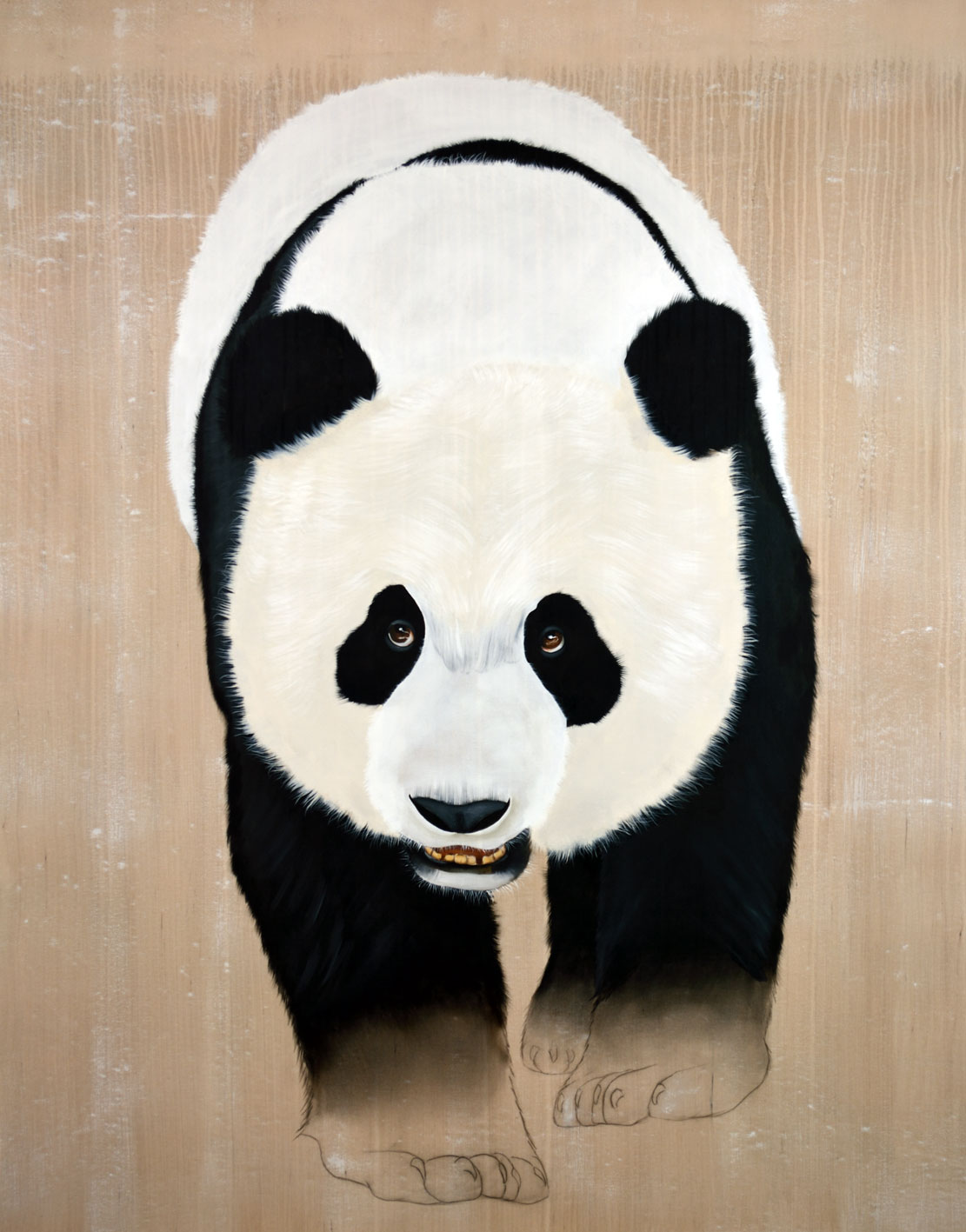Thierry Bisch is a famous contemporary artist painter and widlife artist born in 1953. His widlife art on canvas, like portraits of horses, bears, dogs, elephants, panda-giant-ailuropoda-melanoleuca-threatened-endangered-extinction, wild animals and pets can be found here.
You are looking at AILUROPODA MELANOLEUCA panda-giant-ailuropoda-melanoleuca-threatened-endangered-extinction, done in tempera & oil on canvas
The taxonomic classification precise of the giant panda was discussed for a long time. In the past, he was classified in a separate family, Ailuridae, but this classification is now abandoned to the advantage of a classification of the giant Panda to ursidaes, classification based on its set of teeth, the study of its skeleton and the genetics today. Plainly during decades we classified the Panda in the family of raccoons and skunks to put him finally in his place, at the bears.
The huge panda lives only in the center of China in the mountainous regions covered with forests of height as the province of the Szechuan or in the Tibet, between 1800 and 3400 meters in height. These regions difficult to access to the Westerners before half of the XIXth century are the reason of its late description in west.
His Chinese name Dà xióngmao) mean big cat-bear and byi-la-dom in Tibetan mean cat-bear.
His scientific name is Ailuropoda melanoleuca.
The panda is endowed with six fingers of which a false opposable thumb in the five fingers. This thumb serves in particular to catch the stalks of bamboo on which it feeds in great quantities, until 20kg a day. Although his food diet is 99 % vegetable, he is provided with a digestive system capable of digesting the meat and he is classified among carnivores
The regression of the forests of bamboo for the benefit of new farmlands are the main reason of the decline of the panda, but the cubs are sometimes preys of the snow leopard housing environments of which overlap.
Pick
Bestiary in the menu to see some other canvas of wild and domestic animals and other panda-giant-ailuropoda-melanoleuca-threatened-endangered-extinction.
Be sure to check the
Edition section for some great animal, panda-giant-ailuropoda-melanoleuca-threatened-endangered-extinction, art for decoration.
